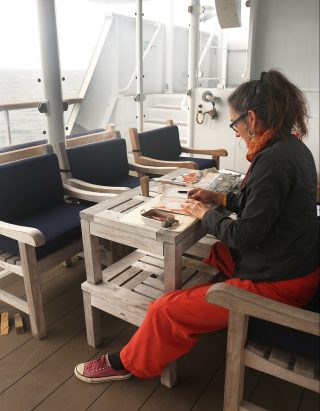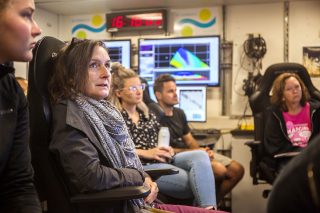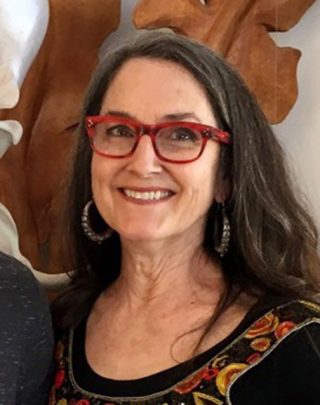Awash in the the bow wave furling off the ship’s sides, our plankton pals surround us on all sides during our transit north along the Cascadia Margin to Astoria, Oregon. Onboard ship, living nearly at the surface level of the sea, there is a deeply felt connection with every tiny organism awash in the waves. For me, there is no better place to know the ocean and the rich life it holds, and delight in its presence.

Every morning I wake on the ship to the reassuring hum of Falkor’s engine from my feathery nest on the top bunk, in this lovely shared cabin with Lori Hepner, an artist from Pittsburg. So much activity and industry goes on in every part of the ship while we sleep, draw, paint and record our shipboard experiences as artists-at-sea. Our work is energized by the stimulating environment of sharing life onboard, as well as being a part of the ongoing science of seafloor mapping. With six artists gathered together for the trip, we have been given an extraordinary opportunity to learn from each other, from the ship’s crew and also have some time to respond and create artwork focused on our participation in the adventure.

Lines, Layers, and Lives
As we observe the ocean’s surface, and watch the data from its bottom scrolling onto the computer screen, there is an abundance of vivid visual information to work with and consider deeply. I find myself wondering about the actual material of the seafloor over which we speed at 10.5 knots. There is rock, sand, mud, and the remains of an infinitude of dead planktonic organisms. It is easy for me to imagine the layers and lives of ancient marine organisms buried and stacked like pages through geological time. Sediment from the continental shelf have compressed and transformed the layers of plankton into coal and oil deposits, suggesting to me that charcoal and earth pigments will be the best materials for my drawings.

I have begun to dig, draw and scratch into this imagined seafloor in an attempt to bring the primordial substrate onto the sketchpad. It is my best method for translating and ultimately understanding the new language and processes of seafloor mapping that I’m learning.

